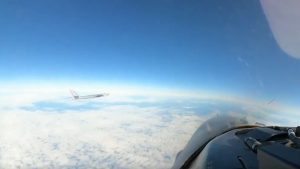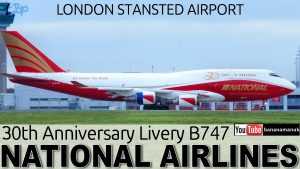Reviews
User Score
Rate This
Descriptions:
As requested a new great Tornado video.
The origin of Red Flag was the unacceptable performance of U.S. Air Force pilots in air combat maneuvering (ACM) (air-to-air combat) during the Vietnam War in comparison to previous wars. Air combat over North Vietnam between 1965 and 1973 led to an overall exchange ratio (ratio of enemy aircraft shot down to the number of own aircraft lost to enemy fighters) of 2.2:1 (for a period of time in June and July 1972 during Operation Linebacker the ratio was less than 1:1).
Among the several factors resulting in this disparity was a lack of realistic ACM training. USAF pilots were not versed in the core values and basics of ACM due to the belief that BVR (Beyond Visual Range) engagements and equipment made maneuvering combats obsolete, and nearly all pilots were unpracticed in maneuvering against dissimilar aircraft because of an Air Force emphasis on flying safety.
An Air Force analysis (Project Red Baron II) showed that a pilot’s chances of survival in combat dramatically increased after he had completed 10 combat missions. Red Flag was created in 1975 to offer US pilots the opportunity to fly 10 realistically-simulated combat missions in a safe training environment with measurable results. Many aircrews had also fallen victim to SAMs and Red Flag exercises provided pilots experience in this regime as well.
The concept of Colonel Richard “Moody” Suter became the driving force in its implementation, persuading Tactical Air Command commander Gen. Robert J. Dixon to adopt the program. At Nellis, Suter was well-known and well-liked. He had 232 Vietnam combat missions. The series of briefings that he delivered inspired enthusiasm among key personnel at Nellis. The first exercise came off on Gen. Dixon’s schedule in November, 1975. On 1 March 1976 the 4440th Tactical Fighter Training Group (Red Flag) was chartered with Col P.J. White as the first commander, Lt. Col Marty Mahrt as vice commander, and Lt. Col David Burner as Director of Operations. This small crew under Col White’s leadership undertook the mammoth task of establishing the program. Their hard, imaginative work over the early years would confirm Red Flag’s promise and turn it into the finest training system in aviation history.
The Aggressor squadrons, the opponents who flew against the pilots undergoing training, were selected from the top fighter pilots in the Air Force. These pilots were trained to fly according to the tactical doctrines of the Soviet Union and other enemies, to better simulate what NATO pilots would encounter in real combat. The Aggressors were originally equipped with readily available T-38 Talon aircraft to simulate the MiG-21. F-5 Tiger II fighters, painted in color schemes commonly found on Soviet aircraft, were added shortly thereafter and became the mainstay until the F-16 was introduced. The 64th and 65th AGRS currently use F-16 and F-15 aircraft to emulate, respectively, the MiG-29 Fulcrum and Su-27 Flanker, and continue to be painted in their camouflage schemes.
This approach differs from that employed during the Vietnam War by the United States Navy to improve fighter aircrew performance. Rather than a large, multi-squadron exercise, the Navy established the United States Navy Fighter Weapons School (more widely known as TOPGUN) in 1969 to “train the trainers,” with squadrons in the fleet selecting their best aircrew for training. Graduates returned to the fleet to share lessons learned with their fellow pilots. Navy Adversary squadrons were also established at Fighter and Attack Master jet bases (NAS Miramar, NAS Oceana and NAS Lemoore as well as NAS Key West) for fleet squadrons to conduct dissimilar air combat training as part of unit level training. These squadrons initially flew the A-4 Skyhawk. The Navy later added the F-5E to its Adversary lineup as well as the F-21 Kfir and a specially built F-16N as well as the F/A-18A. Air Wing level training analogous to Red Flag is conducted at NAS Fallon where NSAWC operates dissimilar adversary aircraft (F-16A and F/A-18A) and VFC-13 flies the F-5E.
The United States Marine Corps (USMC) conducts Weapons and Tactics Instructor (WTI) exercises at Marine Corps Air Station Yuma twice a year as part of the WTI course conducted by MAWTS-1 and uses locally based VMFT-401, the only USMC adversary squadron. Originally equipped with the F-21 Kfir, it now operates the F-5E.
Red Flag was also depicted in a 1981 TV movie “Red Flag: The Ultimate Game”.[1] Red Flag is also featured in a 2004 IMAX film Fighter Pilot: Operation Red Flag.







